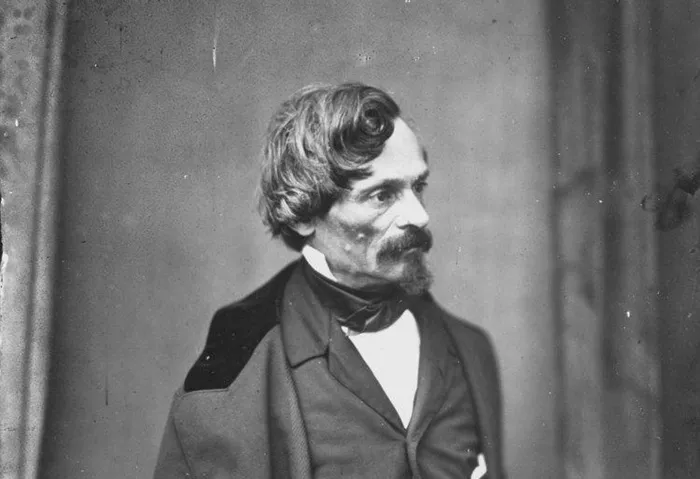Friedrich Julius Hammer was a notable 19th century German poet whose contributions to German poetry, though often overshadowed by his contemporaries, played a role in shaping literary movements of his time. His poetry reflected the spirit of Romanticism while incorporating elements of realism, making his work a bridge between two influential literary styles. Examining Hammer’s poetic themes, stylistic approaches, and influences allows us to appreciate his place within the broader landscape of 19th century German poetry. Comparing his work with that of his contemporaries further highlights the uniqueness of his contributions.
Friedrich Julius Hammer
Friedrich Julius Hammer was born in the early 19th century, a period of significant cultural and intellectual transformation in Germany. This was a time when German poetry flourished, influenced by the ideals of Romanticism. Hammer was shaped by the poetic traditions of Goethe and Schiller, yet he sought to establish his own voice within this rich literary environment. His early exposure to literature and philosophy played a crucial role in shaping his poetic style, which combined lyrical beauty with intellectual depth.
Poetic Themes and Influences
Hammer’s poetry often explored themes of nature, love, existential reflection, and the human condition. Like many 19th century German poets, he was deeply influenced by Romanticism, which emphasized emotion, individualism, and a connection to the natural world. However, his work also showed traces of realism, a movement that gained momentum in the latter half of the century. This duality in his poetic expression set him apart from many of his contemporaries.
The philosophical ideas of figures like Immanuel Kant and Friedrich Schlegel also left an imprint on Hammer’s work. He engaged with themes of self-awareness, destiny, and the sublime, crafting poetry that resonated with intellectual and emotional depth. His ability to merge philosophical inquiry with lyrical expression made his poetry thought-provoking and aesthetically appealing.
Comparison with Contemporaries
Hammer’s work can be compared to other 19th century German poets such as Heinrich Heine, Joseph von Eichendorff, and Eduard Mörike. While Heine is well known for his sharp wit and political undertones, Hammer’s poetry leaned more towards introspection and an appreciation of beauty. Eichendorff, a quintessential Romantic poet, shared Hammer’s fascination with nature and nostalgia, yet Hammer’s engagement with realism distinguished him from the more idealistic tone of Eichendorff’s work. Mörike, known for his delicate lyrical style, had a thematic affinity with Hammer, yet the latter’s poems often carried a stronger philosophical undertone.
Compared to these poets, Hammer’s legacy is less widely recognized. However, his unique blending of Romanticism and realism positions him as an important transitional figure in German poetry. His influence may not have been as pronounced as that of Heine or Eichendorff, but his contributions enriched the literary discourse of his time.
Stylistic Elements
Hammer’s poetic style was characterized by fluidity, evocative imagery, and philosophical musings. He often employed simple yet powerful language, making his poetry accessible while still engaging with profound ideas. The use of nature as a metaphor for human emotions was a common feature in his work, aligning him with Romantic traditions.
His use of rhyme and rhythm contributed to the musicality of his poetry, creating a sense of harmony that complemented his thematic concerns. At the same time, his engagement with realism meant that his poetry also contained vivid descriptions of everyday life, making his work resonate with a broad audience.
Reception and Legacy
Despite his talent, Hammer did not achieve the same level of fame as some of his contemporaries. However, literary scholars recognize his contributions to 19th century German poetry as part of the broader evolution of literary movements. His ability to balance Romanticism with elements of realism foreshadowed later developments in German literature.
In modern literary studies, there is a growing appreciation for poets like Hammer who operated on the margins of mainstream literary history. His work provides valuable insights into the transition from Romanticism to realism, demonstrating how poets of the 19th century navigated changing artistic and philosophical landscapes.
Conclusion
Friedrich Julius Hammer remains a significant yet often overlooked figure in 19th century German poetry. His work bridges the Romantic and realist traditions, offering a unique perspective on the literary developments of his time. While he may not be as widely celebrated as Heine or Eichendorff, his poetry reflects the richness and complexity of German literary history. By revisiting and reassessing his contributions, scholars and readers can gain a deeper understanding of the diverse voices that shaped German poetry during this transformative era.

